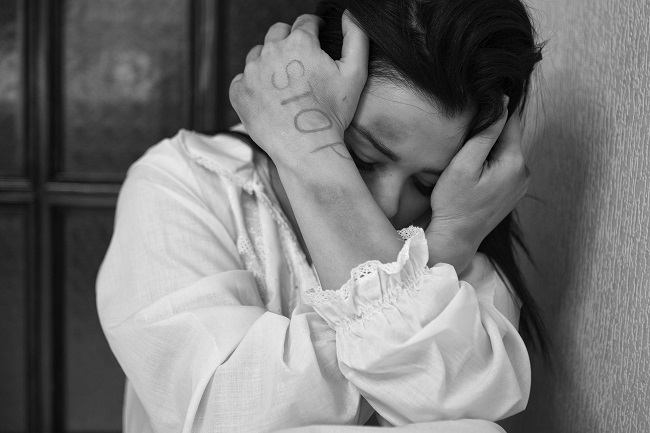Trafficking, Prostitution, and the Role of Climate Change
Trafficking humans for the purpose of flesh trade and prostitution is a deeply ingrained problem, often fueled by poverty. While some women might choose prostitution as a livelihood, others are coerced into it through trafficking. In both scenarios, poverty remains a common denominator. Interestingly, recent revelations have highlighted an unexpected connection between climate change and these issues. This connection arises from the fact that climate change can trigger situations that drive people, especially women, towards prostitution as a desperate means of survival.
Climate change indirectly exacerbates human trafficking and prostitution through several mechanisms. The displacement and migration caused by climate-related disasters create vulnerable populations that traffickers exploit. Economic vulnerabilities stemming from disrupted local economies can force women and children into prostitution for survival. The scarcity of resources due to climate impacts further compels individuals towards trafficking and exploitation. Additionally, climate-related disasters damage infrastructure, making vulnerable populations more susceptible to traffickers. The influx of temporary labour opportunities in disaster recovery efforts can also be manipulated by traffickers. Acknowledging the complex interplay of social, economic, and political factors is crucial to addressing these challenges holistically.
Shift from legitimate sources of income to prostitution
Climate change’s impacts go beyond global warming and extend to various social issues. A significant consequence is the shift from legitimate income sources to forced prostitution for women and young girls. Traditionally, traffickers targeted minors for the flesh trade, but the pandemic disrupted this trend. During COVID-19 lockdowns, traffickers faced difficulties finding vulnerable children. This led to a disturbing observation: women aged 30 to 40, and sometimes older, were trafficked under the pretext of respectable employment. This shift indicates that only the female body matters in prostitution, not age.
The informal labour sector, significantly affected by the pandemic, forced many to migrate, making women easy prey for traffickers. The financial vulnerability of older women, compounded by COVID-19 and climate change impacts, becomes a breeding ground for exploitation. In climate-affected regions like South and North Parganas 24 in India, extreme weather events worsened economic situations, leaving vulnerable individuals susceptible to forced labour or sexual exploitation. Official records show high numbers of human trafficking cases, especially sexual exploitation, with actual figures potentially much higher.
Climate Change, Vulnerability, and Exploitation
Extreme weather events triggered by climate change, such as drought, are making women, children, and minority groups more susceptible to modern slavery and trafficking. Examples from various countries, including Accra in Ghana, demonstrate how climate-induced migration leads to dangerous situations for women, often involving trafficking, exploitation, and debt bondage. The vulnerability of children also increases due to climate change’s impacts on resource scarcity, alternate livelihoods, and safety nets.
According to the data of Maiti Nepal, an anti-trafficking organisation, trafficking has risen from approximately 3,000–5,000 in the 1990s to current figures of 12,000–20,000 per year. Moreover, this data suggests a potential 20–30% increase in trafficking incidents during disasters. Interpol has also cautioned that disasters and conflicts may elevate women’s vulnerability to trafficking due to disrupted families and lost livelihoods. Therefore, focused initiatives to mitigate women’s and children’s susceptibility to exploitation and abuse are imperative, given the escalating frequency of extreme climate events, growing populations, and intensifying pressures and changes in land use.
Desperation and prostitution
Regions severely impacted by climate change and struggling with poverty often push women from affected families into prostitution when employment opportunities are scarce. A study in Kolkata during Cyclone Aila’s year showed a significant increase in sex workers, highlighting the link between climate-induced adversity and prostitution. Engaging in prostitution is a difficult choice for women, often stemming from a lack of viable alternatives. The physical and emotional toll is acknowledged, yet for many, it becomes their last-resort means of survival.
Following a natural disaster, the combination of economic difficulties and security concerns may drive women responsible for their households and livelihoods to seek temporary refuge and more suitable living conditions, often in unstable environments. This renders them susceptible to exploitation and human trafficking. Disasters that elevate physical, social, and economic vulnerabilities, particularly affecting women and children, serve as key catalysts in the genesis of trafficking. Consequently, areas struck by disasters and marked by insecurity should be recognised as potential hotspots for such detrimental activities.
Climate Change’s Multifaceted Impact
Climate change transcends its environmental aspect and permeates social, legal, and economic dimensions. Extensive research underscores its multifaceted nature, revealing its impact on society and systems. Recognising this broader scope is essential to addressing the complex interplay of climate change and its far-reaching consequences.
It’s crucial to elevate these concerns to the international level since they transcend specific regions or countries. Climate change is a global issue that affects every country in the world. To address this, it’s essential to identify the most severely affected areas due to climate change and natural disasters. Here, NGOs can play a pivotal role by acting as intermediaries between the general populace and the government. They can shed light on the social, economic, and other challenges faced by these areas, prompting swift government action and remedies. Equipping residents with skill-based education is vital, enabling them to establish their own livelihoods. This applies to both men and women, necessitating equal access to diverse skill education and training opportunities. The administrative authorities and NGOs should continuously monitor and curb the unlawful activities of traffickers in these vulnerable areas, particularly to combat human trafficking for sexual exploitation. Equally important is educating women and girls and empowering them to distinguish right from wrong and make informed decisions. Governments also need to prioritise regions consistently affected by natural disasters and severe climate change impacts, offering employment prospects and economic stability to the people residing there.
Dr Pyali Chatterjee is HOD, Faculty of Law, ICFAI University, Raipur, Chhattisgarh.







